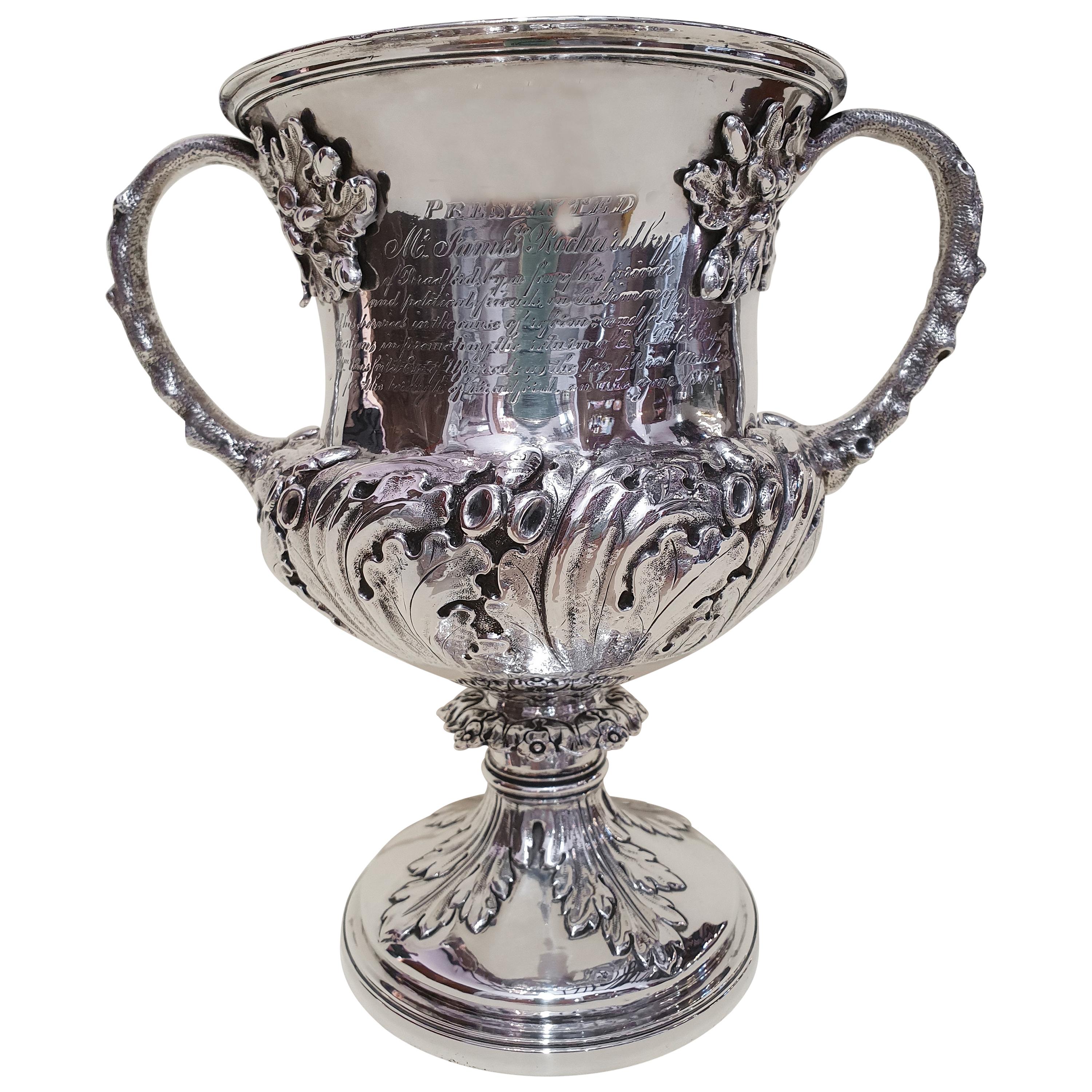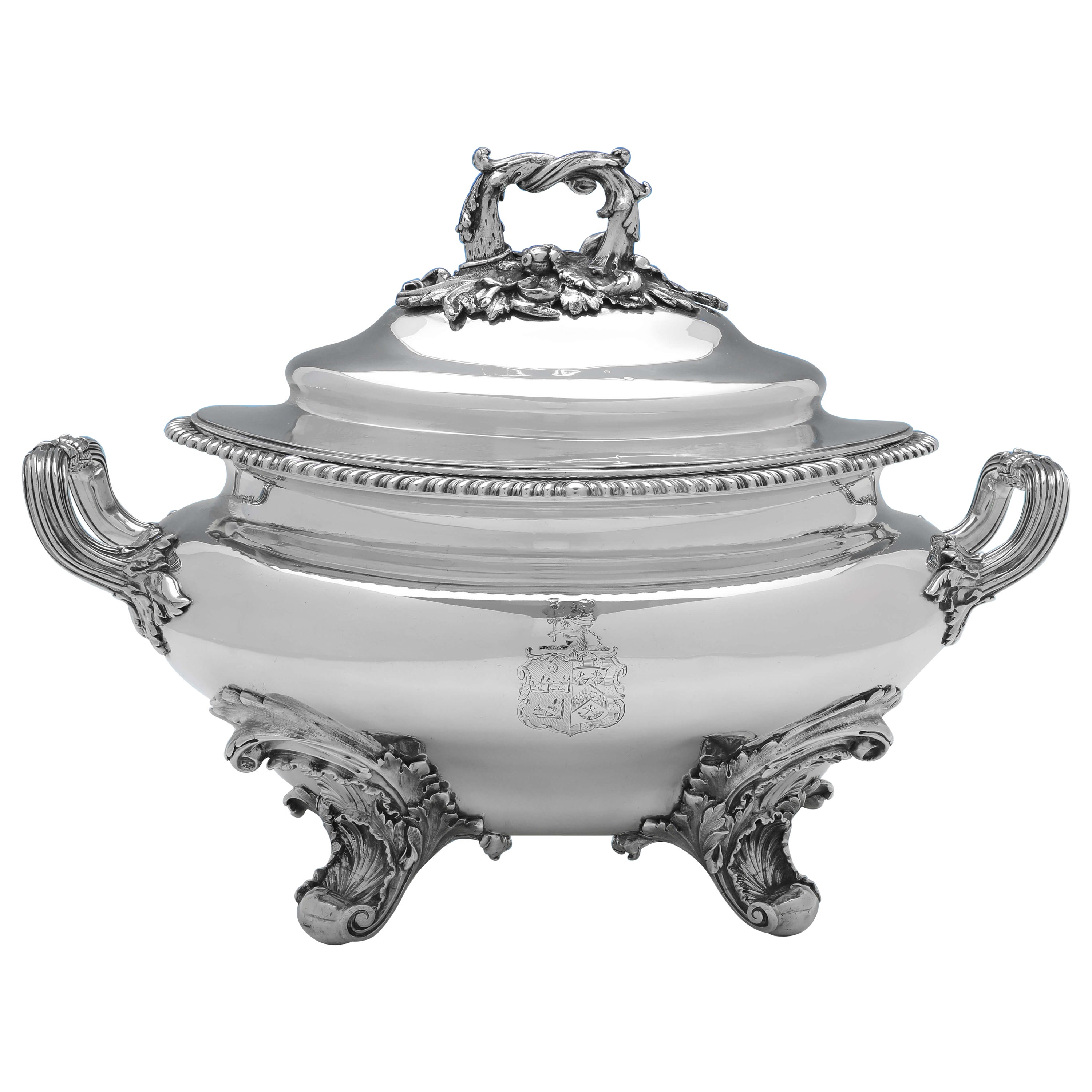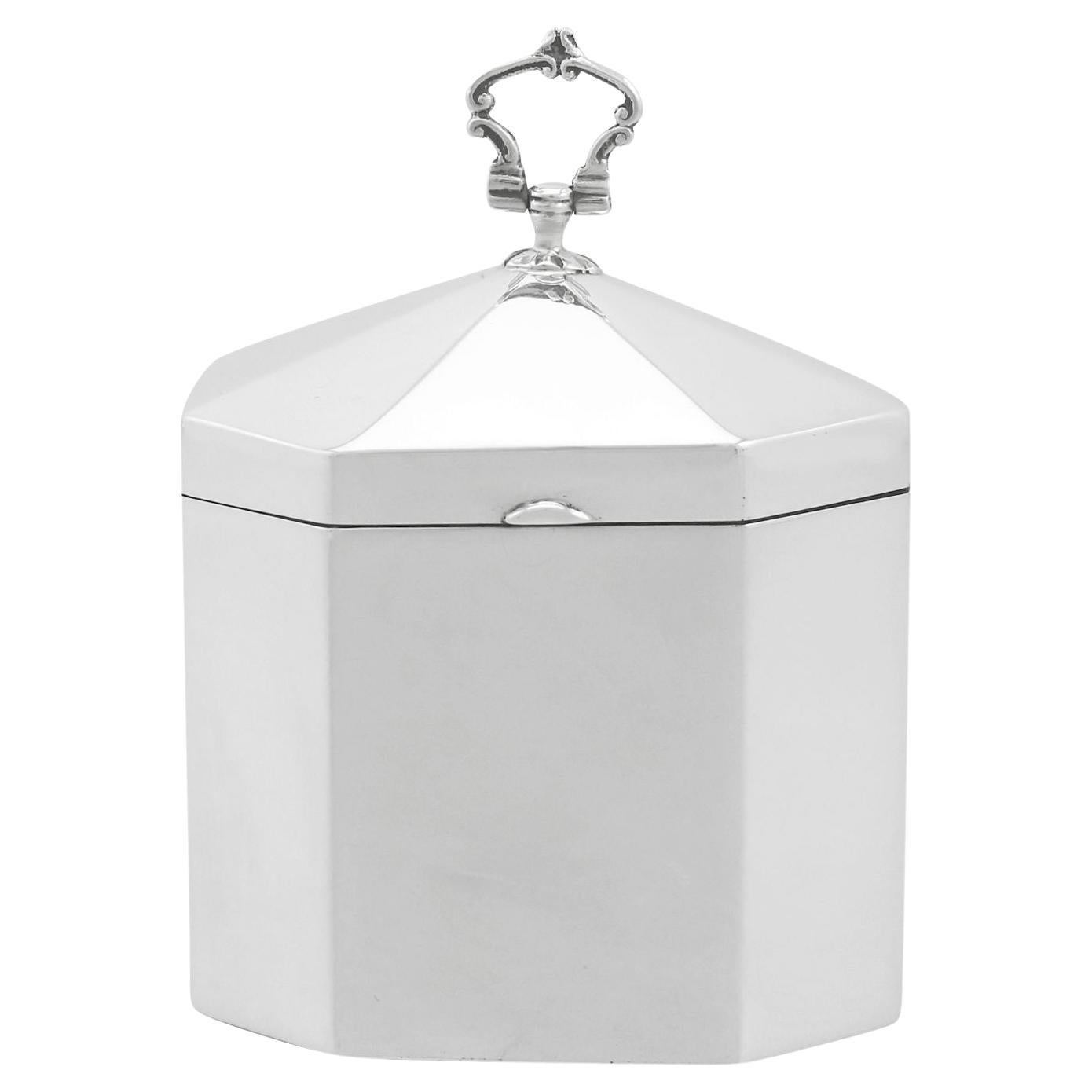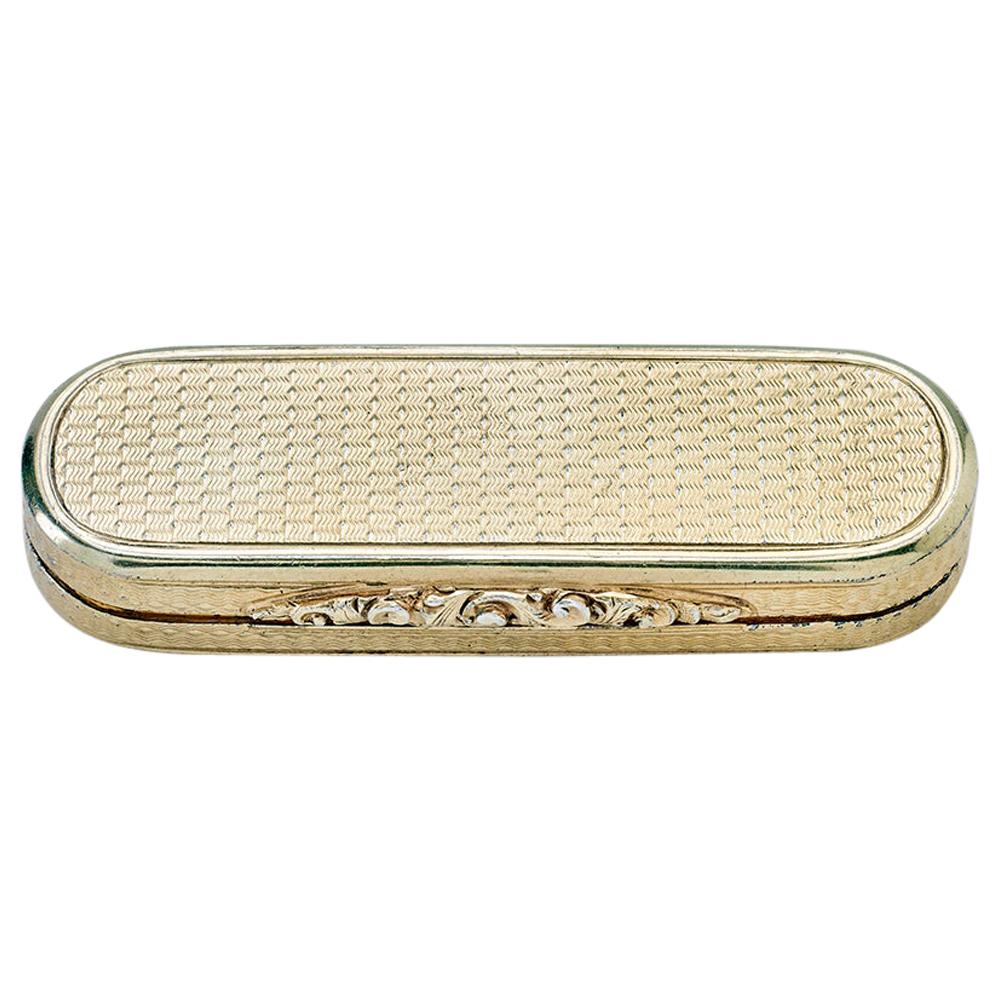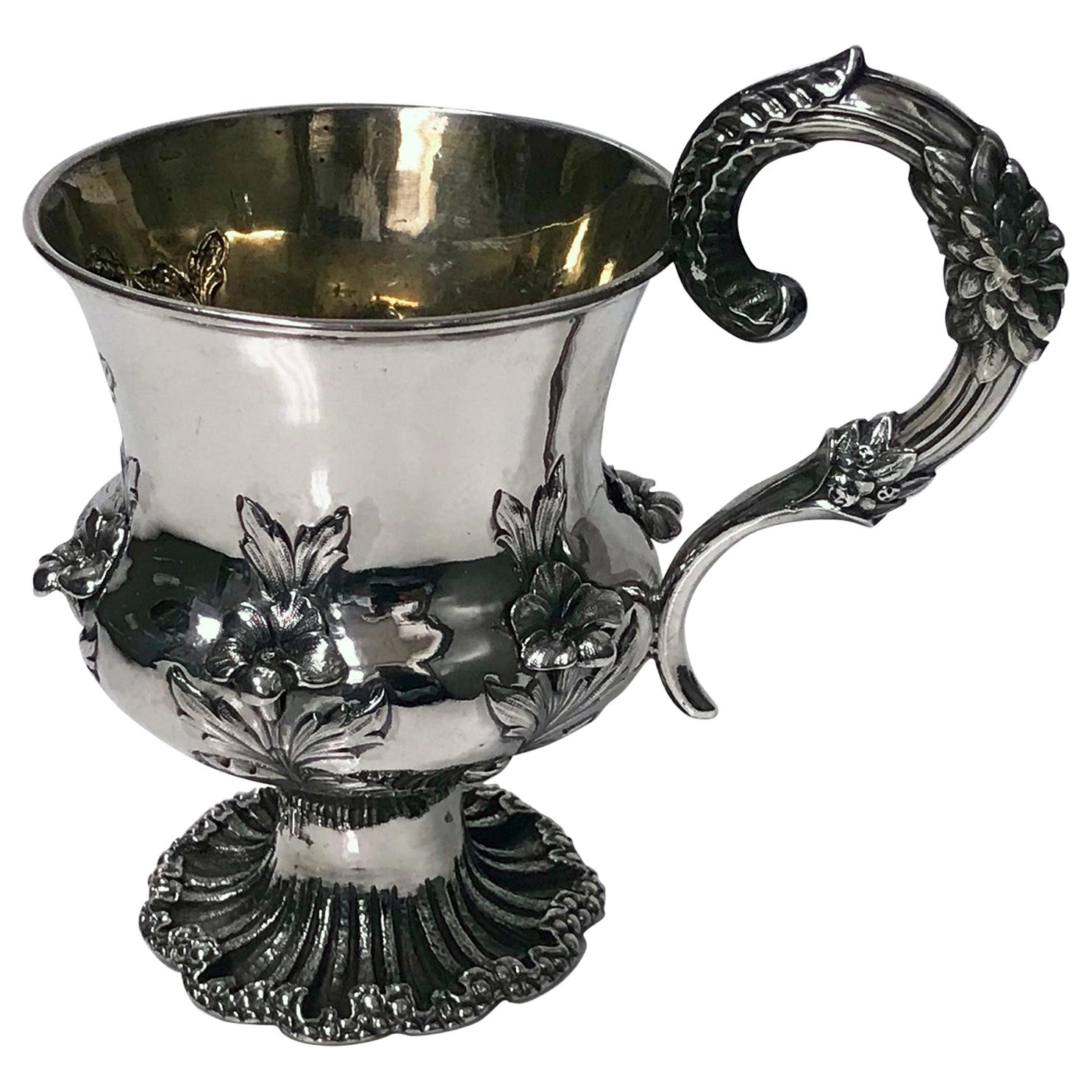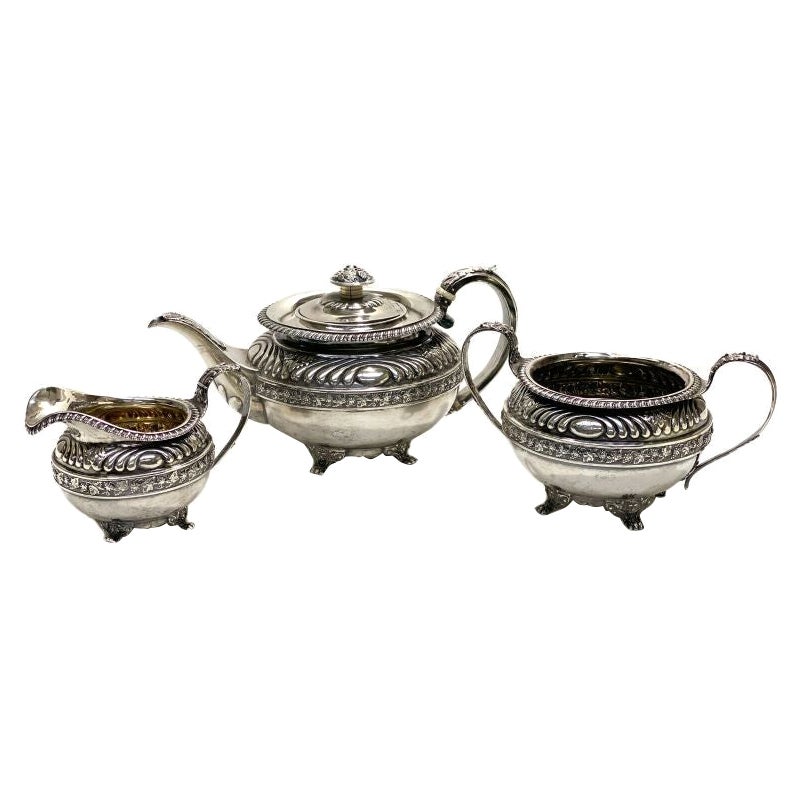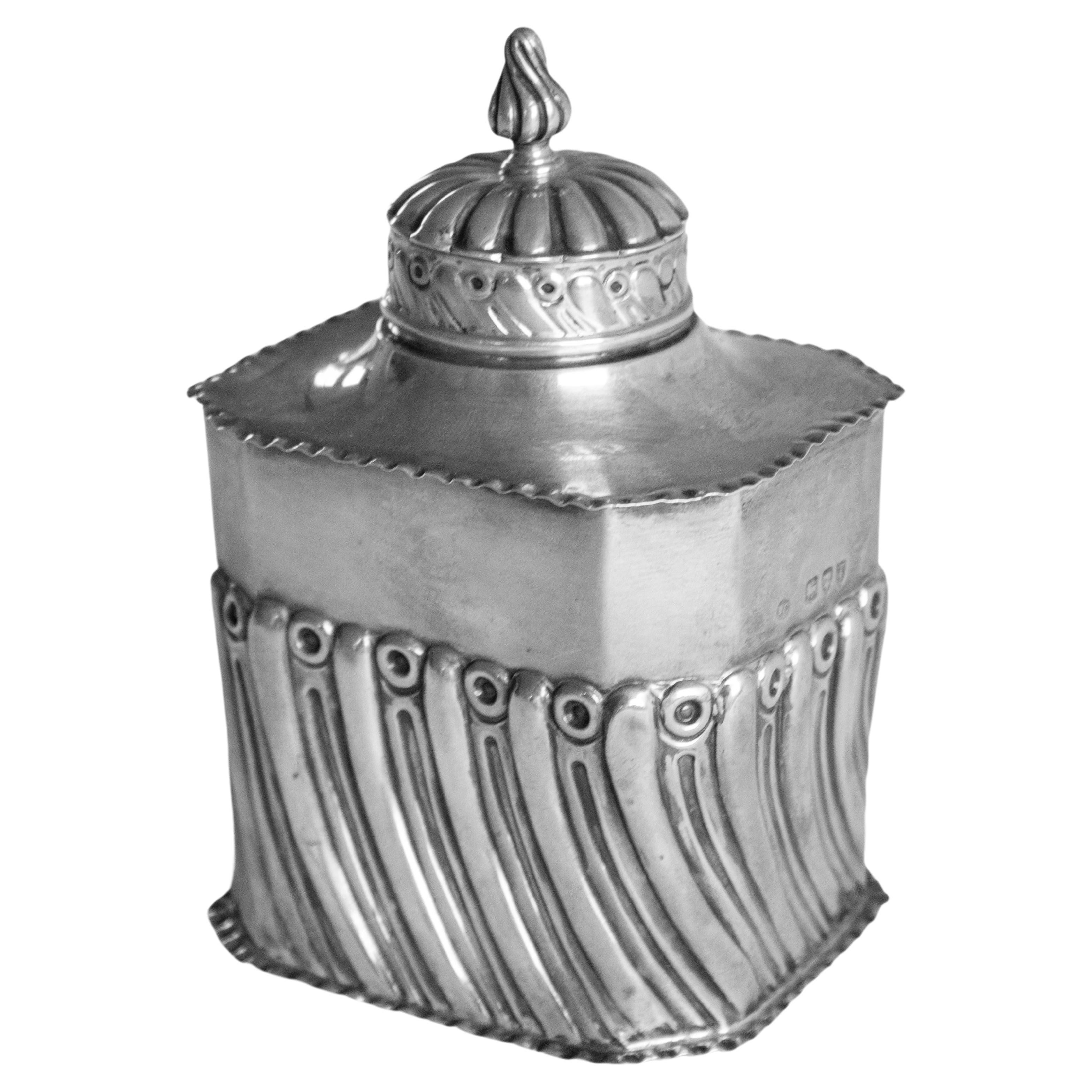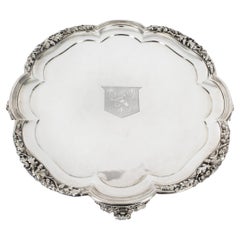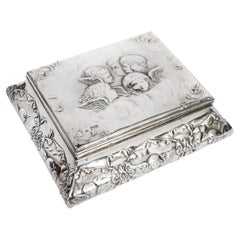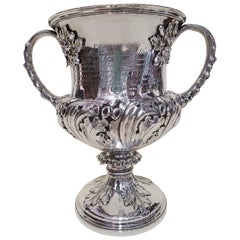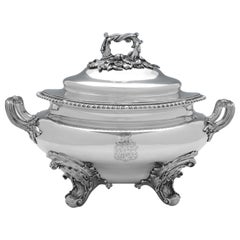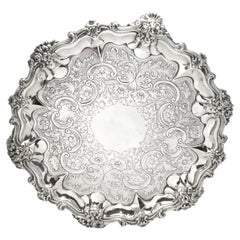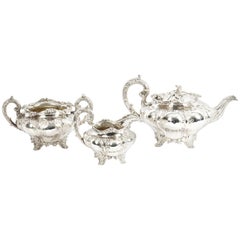
Antique English William IV Silver Tea Set Edward Bernard & Sons London 1833
View Similar Items
Want more images or videos?
Request additional images or videos from the seller
1 of 21
Antique English William IV Silver Tea Set Edward Bernard & Sons London 1833
About the Item
- Dimensions:Height: 6.3 in (16 cm)Width: 11.03 in (28 cm)Depth: 7.09 in (18 cm)
- Sold As:Set of 3
- Style:William IV (Of the Period)
- Materials and Techniques:
- Place of Origin:
- Period:
- Date of Manufacture:1833
- Condition:
- Seller Location:London, GB
- Reference Number:Seller: 097931stDibs: LU950616338152
About the Seller
5.0
Platinum Seller
These expertly vetted sellers are 1stDibs' most experienced sellers and are rated highest by our customers.
Established in 1983
1stDibs seller since 2012
1,203 sales on 1stDibs
Typical response time: 1 hour
Associations
LAPADA - The Association of Arts & Antiques Dealers
More From This SellerView All
- Antique Large William IV Silver Tray Salver by Paul Storr 1837 19th CenturyBy Paul StorrLocated in London, GBThis is a wonderful English antique William IV sterling silver tray, or salver, by the world famous silversmith Paul Storr. It has clear hallmarks for London 1837 the makers mark of Paul Storr and is also engraved Storr & Mortimer 36, they were Goldsmiths and Jewellers to Her Majesty’ (1822-1839). It is typical of his work with the octafoil shape and the exquisitely detailed foliate and acorn rim. It is raised on four delightful foliate and scroll feet. The centre is engraved with a shield shaped coat of arms encompassing the lion rampant which I have had researched: The Arms of the Family of King The arms as engraved upon this William IV English Sterling Silver Footed Salver by Paul Storr hallmarked London 1837 are those of the family of King. They may be blazoned as follows: Arms: Sable a lion rampant between three crosses formy fitchy argent Undoubtedly this salver was in the possession of a gentleman who was member of a family bearing the name of King. There are a number of variants of these armorial bearings being borne by King families. Very often the lion is of a different tincture but the field of the shield is invariably remains ‘sable’. Similar arms and crest were recorded by Sir Edward Bysshe, Clarenceux King of Arms in his Visitation of the County of Kent of 1663 to the family of King, of Bromley. The tinctures of both arms and crest of King, of Bromley were slightly different to those engraved upon this tureen in that the Visitation family’s arms were ‘Sable a lion rampant ermine between three crosses paty fitchy or’ 1 and the crest ‘A lion’s gamb erect and erased sable holding a cross paty fitchy or’(see illustration below). These arms and crest were granted by Sir Edward Walker, Garter King of Arms on the 20th February 1660 – 61; and yet another Kentish family of King, of Bellevue who were created Baronets within the Baronetage of Great Britain in 1792 bore for their arms ‘Sable a lion rampant erminois between three crosses paty fitchy or’. Their crest being the same as the family of King, of Bromley. There is no mistaking its unique quality and design, which is sure to make it a treasured piece by any discerning collector. Please see potos of the 2nd Baronet Timothy Shelley, 1753-1844 and Castle Goring, his home. Condition: In excellent condition with clear hallmarks and no dings, dents or signs of repair. Please see photos for confirmation. Dimensions in cm: height 4 x width 44 x depth 44 Weight 1.96 kg Dimensions in inches: height 2 inches x width 1 foot, 5 inches x depth 1 foot, 5 inches Weight 63 troy oz Paul Storr born in London England in 1771, was to become one of the most talented silversmiths of the nineteenth century. Today his legacy of exceptionally well crafted silver, found worldwide in museums and private collections, leaves one in awe when compared to that of his contemporaries.After having served a seven year apprenticeship from the age of 14, he began his career in 1792 when he went into a brief partnership with William Frisbee. This did not last and in 1793 a new mark, (his initials ‘P S’) was entered. By the beginning of the nineteenth century he had established himself as one of London’s top silversmiths producing, amongst others, commissions for Royalty. In 1801 he married Elizabeth Susanna Beyer with whom he was to have ten children. In 1807 Paul Storr entered into a working relationship with Philip Rundell and by 1811 was a partner, and managing the workshops for Rundell, Bridge & Rundell. During this period he kept his own marks and separate workshop. However it was through Rundell, Bridge & Rundell who were appointed Goldsmith in Ordinary to George III in 1804 that his reputation as a master silversmith grew. His talents lay in being able to transform ideas and designs from Rundell, Bridge & Rundell’s designers, William Theed...Category
Antique 1830s English William IV Sterling Silver
MaterialsSterling Silver
- Antique Large William IV Silver Tray Salver by Paul Storr 1820 19th CenturyBy Paul StorrLocated in London, GBThis is a wonderful English antique William IV sterling silver tray, or salver, by the world famous silversmith Paul Storr. It has clear hallmarks for London 1820 the makers mark of Paul Storr. It is typical of his work with the octafoil shape and the exquisitely detailed reeded rim, and it is raised on four delightful foliate and scroll feet. The centre is engraved with a shield shaped coat of arms which I have had researched. The Marital Arms of Knollis and Hallifax The armorial bearings as engraved upon this George IV Large English Sterling Silver Footed Salver by Paul Storr hallmarked London 1820 are those of the family of Knollis with Hallifax in pretence. These armorial bearings denote the marshalling of a marital coat showing the arms of the husband over the entire surface of the shield, whilst the arms of the wife (as an heraldic heiress) are placed on a small shield (known as an escutcheon of pretence) centrally on the husband’s arms. They may be blazoned as follows: Arms: Quarterly 1st and 4th Azure crusily of cross crosslets a cross moline voided or (for Knollys) 2nd and 3rd Gules on a chevron argent three roses of the field barbed proper (for Knollys) over all an escutcheon of pretence Or on a pile engrailed sable between two fountains barry wavy of six argent and azure three cross crosslets of the first (for Hallifax) Crest: An elephant argent [differenced with a mullet1 ] (for Knollys) Motto: In utrumque paratus [Prepared for either] (for Knollys) These armorial bearings undoubtedly commemorate the marriage of The Honourable and Reverend Francis Knollis2 (baptised 3rd January 1743 died 27th February 1826), 1 The cadency mark for a third son of a family. 2 Francis appears to have preferred this spelling of his family’s surname. It is spelt as it is to be pronounced. of Burford in the County of Oxfordshire and of Eastleach Martin in the County of Gloucestershire and Mary Hallifax (baptised 5th March 1753 buried 18th December 1830). Francis and Mary were married at the Parish Church of St Mary, Ewell in the County of Surrey on the 9th June 1772. Francis was the third son of Charles Knollys (the titular 5th Earl of Banbury) 3 and his wife, Martha Hughes, whilst Mary was the daughter of The Reverend James Hallifax, of Ewell aforesaid and his wife, Elizabeth Chardavoyn. 3 Francis’s father claimed to be the 5th Earl of Banbury. A claim that continued to be pursued by the family until William Knollys, the titular 8th Earl of Banbury (born 1763 died 1834) was forced to discontinue its use by a resolution of the House of Lords which rejected his claim to the earldom in 1813. The crest surmounts a detailed dedication: This piece of plate was presented to the Honourable Rev Knolls by the inhabitants of the town and immediate neighbourhood of Burford on his completing the fiftieth year of his incumbency as the vicar of Burford. In testimony of their high respect 11th April 1821 There is no mistaking its unique quality and design, which is sure to make it a treasured piece by any discerning collector. Condition: In excellent condition with clear hallmarks and no dings, dents or signs of repair. Please see photos for confirmation. Dimensions in cm: Height 3 x Width 36 x Depth 36 Weight 1.52 kg Dimensions in inches: Height 1 inch x Width 1 foot, 2 inches x Depth 1 foot, 2 inches Weight 49 troy oz Paul Storr born in London England in 1771, was to become one of the most talented silversmiths of the nineteenth century. Today his legacy of exceptionally well crafted silver, found worldwide in museums and private collections, leaves one in awe when compared to that of his contemporaries.After having served a seven year apprenticeship from the age of 14, he began his career in 1792 when he went into a brief partnership with William Frisbee. This did not last and in 1793 a new mark, (his initials ‘P S’) was entered. By the beginning of the nineteenth century he had established himself as one of London’s top silversmiths producing, amongst others, commissions for Royalty. In 1801 he married Elizabeth Susanna Beyer with whom he was to have ten children. In 1807 Paul Storr entered into a working relationship with Philip Rundell and by 1811 was a partner, and managing the workshops for Rundell, Bridge & Rundell. During this period he kept his own marks and separate workshop. However it was through Rundell, Bridge & Rundell who were appointed Goldsmith in Ordinary to George III in 1804 that his reputation as a master silversmith grew. His talents lay in being able to transform ideas and designs from Rundell, Bridge & Rundell’s designers, William Theed...Category
Antique 1820s English William IV Sterling Silver
MaterialsSterling Silver
- Antique Victorian Sterling Silver Casket by William Comyns & Sons 1898By William Comyns & Sons 1Located in London, GBThis is an elegant antique Victorian sterling silver casket with hallmarks for London, 1898 and the makers marks of the renowned silversmith William Comyns & Sons. The shaped casket...Category
Antique 19th Century English Victorian Sterling Silver
MaterialsSterling Silver
- Antique Set of 3 Sterling Silver Candlesticks William Gibson & John Langman 1895Located in London, GBThis is a striking set of three antique English Victorian sterling silver candlesticks bearing the makers' marks of the renowned silversmiths William Gibson & John Langman, London, a...Category
Antique 1890s English Victorian Sterling Silver
MaterialsSterling Silver
- Antique Set 8 English William IV Barback Dining Chairs Circa 1830 19th CLocated in London, GBThis is a fantastic English set of eight antique William IV barback dining chairs, circa 1830 in date. The set comprising eight sidechairs with seats that have been reupholstered in a striking azur fabric, and raised on reeded baluster front legs. These chairs have been masterfully crafted in beautiful solid mahogany throughout and the finish and attention to detail on display are truly breathtaking. Transform the fine dining experience in your home with this set of dining chairs fit for a king. THE BOTANICAL NAME FOR THE MAHOGANY THEESE ITEMS ARE MADE OF IS SWIETENIA MACROPHYLLA AND THIS TYPE OF MAHOGANY IS NOT SUBJECT TO CITES REGULATION. Condition: In excellent condition having been beautifully cleaned, polished, waxed and reupholstered in our workshops, please see photos for confirmation. Dimensions in cm: Height 87 x Width 47 x Depth 52 Height 48 - Seat Height Dimensions in inches: Height 2 foot, 10 inches x Width 1 foot, 6 inches x Depth 1 foot, 8 inches Height 1 foot, 7 inches - Seat Height Mahogany is probably one of the largest ‘families’ of hardwood, having many different varieties within its own species. Mahogany has been used for centuries in ship building, house building, furniture making etc and is the core structure of just about every 19th century vanity box, dressing case or jewellery box. It became more of a Victorian trend to dress Mahogany with these decorative veneers so that the actual Mahogany was almost hidden from view. Mahogany itself is a rich reddish brown wood that can range from being plain in appearance to something that is so vibrant, figured and almost three dimensional in effect. Although Mahogany was most often used in its solid form, it also provided some beautifully figured varieties of veneer like ‘Flame’ Mahogany and ‘Fiddleback’ Mahogany (named after its preferred use in the manufacture of fine musical instruments). Cuban Mahogany was so sought after, that by the late 1850′s, this particular variety became all but extinct. William IV - the brief reign of William IV (1830 – 1837) marked a period of transition between the Regency period (which had been an age of innovation based on revivalist styles such as ancient Egypt, and the Grecian designs) and the Victorian era. William IV furniture...Category
Antique 1830s English William IV Dining Room Chairs
MaterialsMahogany
- Antique English Sterling Silver Card Case Mappin & Webb 1904By Deakin & FrancisLocated in London, GBThis is a stylish antique Edwardian sterling silver card case with hallmarks for Birmingham 1904 and the makers mark of the renowned silversmiths Deakin & Francis Ltd, in the origina...Category
Antique Early 1900s English Edwardian Sterling Silver
MaterialsSterling Silver
You May Also Like
- Antique William IV Sterling Silver Presentation Cup, London, England, 1835By Jason HobbsLocated in Cagliari, ITA fine and impressive antique William IV English sterling silver presentation cup by Jason Hobbs. This presentation cup has a Campania form onto a knopped pedestal to a circular spr...Category
Antique 1830s English William IV Sterling Silver
MaterialsSterling Silver
$3,344 Sale Price30% Off - William IV Period Antique Sterling Silver Soup Tureen - London 1835 - BarnardsBy BarnardsLocated in London, LondonHallmarked in London in 1835 by Barnards, this superb, William IV, Antique Sterling Silver Soup Tureen, features an ornate cast handle to the lid and ornate cast feet, a gadroon bord...Category
Antique 1830s English William IV Sterling Silver
MaterialsSterling Silver
- Antique William IV Sterling Silver Flat-Chased Waiter Tray London 1831By Edward & John BarnardLocated in Norwich, GBAntique William IV sterling silver flat-chased waiter, hallmarked London, 1831, by makers Edward, Edward Jr, John and W. Barnard. The decorative waiter has a scroll and foliate cast...Category
Antique 19th Century English William IV Sterling Silver
MaterialsSilver, Sterling Silver
- Sterling Silver Toast Rack London 1833By Charles Fox IILocated in Tunbridge Wells, GBHeading : Sterling silver toast rack Date : Hallmarked in London in 1833 for Charles Fox II Period : William IV Origin : London, England Decoration : Six divisions with double loop d...Category
Antique 1830s British William IV Sterling Silver
MaterialsSilver
- George IV Period Antique Silver Tea Set, London 1828 Charles Fox IIBy Charles Fox IILocated in London, LondonHallmarked in London in 1828 by Charles Fox II, this delightful, George IV, Antique Sterling Silver Tea Set, features converged fluting, silver handles ...Category
Antique 1820s English George IV Sterling Silver
MaterialsSterling Silver
- 3 Piece George IV Sterling Silver Tea Set London, 1825By Rebecca Emes & Edward Barnard 1Located in Tunbridge Wells, GB3 Piece George IV Sterling Silver Tea Set London, 1825 Additional information: Date : Hallmarked in London 1825 For Rebecca Emes and Edward Barn...Category
Antique 19th Century English George IV Sterling Silver
MaterialsSterling Silver
Recently Viewed
View AllMore Ways To Browse
Sterling Silver Tea Set Rare
Stanley Antique Furniture
Charles Edward Antiques
London Sterling Silver Tea Pot
Francis I Sterling
Francis I Sterling Silver
Henry Ii Style
Walter Wright
Sterling Tea Pot On Stand
Sterling Silver Teapot Stand
Antique Teapot Stand
Edward Barnard And Sons
Ding Pot
Stanley Dining Set
C Thomas Jr
Dior Tea Set
Berry And Company Antique Silver
William Berry
